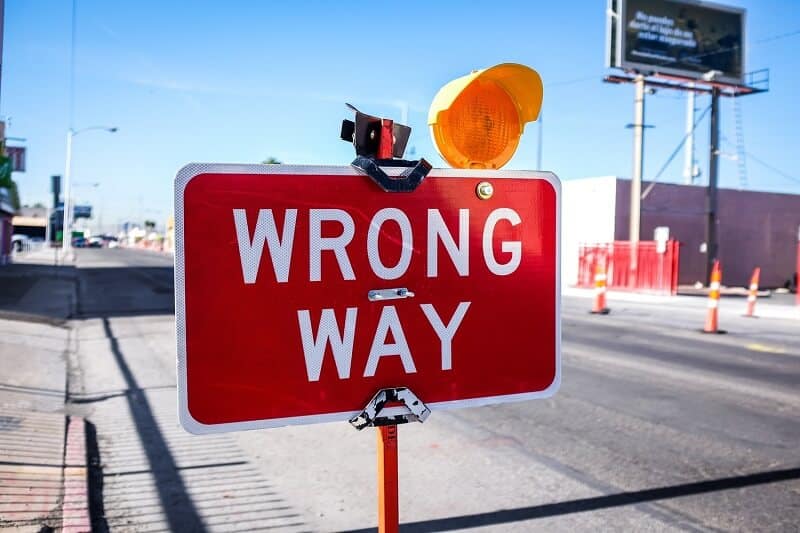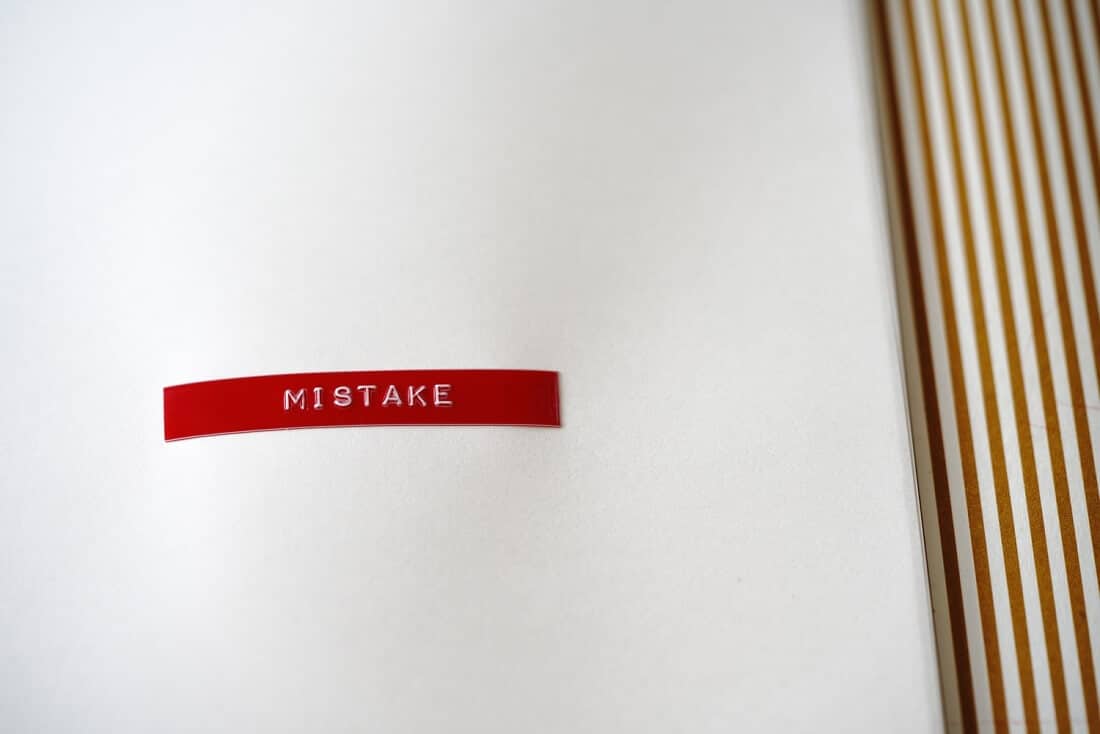
If you have losing trades it is possible you have too many trading mistakes. Recognizing mistakes is half of the battle. The other half is how to avoid them.
Trading mistakes are common both for traders and investors, for the novice and experienced traders. Even though traders and investors practice different styles of trading, they often make the same trading mistakes. Some of the mistakes are more costly for investors, some for traders. For both kinds of market participants, it is essential to understand these common trading mistakes and avoid them. Think about bad trades as a process of learning and after you collect a significant number of them you’ll be more experienced and able to perform better trades. But this process can be shorter if you have an upfront understanding of where trading mistakes could arise.
That could give you a chance to react correctly and quickly enough to protect your investment portfolio.
Here are some trading mistakes that happen to both experienced and novice traders. These suggestions could help you to recognize them and give you a chance to avoid or correct them. So you should be able to gather the profits!
Trading mistakes that traders shouldn’t do when trading
Never risk a huge amount of your capital or going all-in. We all have a great expectation to earn a huge amount of money but one of the trading mistakes is putting all capital into a single trade and expect that could provide you great profits. How is that possible if every single trader, when asked, knows about the 1% rule. That means you should never put more than 1% of your capital into one trade. This is one of the common trading mistakes because traders constantly try to gain it all back. Mostly without a risk management trading plan. But even if you have a trading plan, sometimes you’ll be pushed to ignore it. You could be motivated to take a large trade which usually you wouldn’t. Don’t do that, try to resist. Stay stick to your risk management trading plan. The temptation can be a very bad companion in stock trading.
Even if you think you are ready for a big portion in a single trade. Trust us, you don’t want to jump into the deep end. Especially if you are not skilled enough. Going all-in may cause unpredictable damages, financial and emotional, so great that you may decide to give up the stock trading forever.
The much better approach is to trade gradually at regular intervals and slowly increasing the amount per trade. In this kind of approach, you have two benefits: you won’t put all investment capital at risk and you’ll remove emotions when deciding when to buy a stock.
Not having a trading plan is a great mistake in trading stocks
Among trading mistakes, this particular is maybe the most dangerous. If you don’t have a trading plan how will you know when to enter the trade or exit the trade. Skilled traders get into a trade with an outlined plan. They know their precise entry and exit points, how much capital to invest in the single trade, and what is the highest loss they want to take.
Novice traders usually don’t have a trading plan before they start trading. Even if they have a trading plan, beginners could be more apt to turn out of the plan and take more risks and reverse the course totally.
For example, they enter the trade with the belief that the stock price will rise shortly after they enter the position. That isn’t going to happen! But this fact is known to experienced traders, beginners don’t know that. And what happens the next is the trade is going against them. But most of them will not exit the position, they will hold in the hope that the price will go up. And the price continues to fall more and more but they don’t want to sell the stock, they don’t want to take the loss and end up losing everything. That is one of the most dangerous trading mistakes.
Further, even if they found a great entry point and the price starts to rise. Honestly, it could be a matter of luck, not knowledge. What do beginners do? They become greedy. Instead of selling stock and taking a profit, they hold the position. Very soon, the trade turns against them, and a winning trade shifts into a losing trade.
Shorting stocks too early
If you short the stock too early it is more likely you’ll be destroyed on your shorts. Everything that flew always landed. This is especially true of stock trading and pumps and dumps.
For example, you notice a stock in the early stage of a pump. You are happy to buy and drive along as it increases. But at some point, it starts to drop, and you may profit by selling short. But when is that moment? When you have to go short? The timing is extremely important. What if you sell too soon? How to recognize that exact moment for short selling? First, you have to find the top on the stock. That means you have to recognize the resistance level. That is the point where buyers are leaving, but also the point where the sellers appear and begin to take over the stock.
Short selling is dangerous anyway and only experienced trades should use it. If you practice this strategy or want to, be careful. Without proper knowledge and experience, you’ll jump into one of the biggest trading mistakes.
Use stop-loss orders to avoid trading mistakes
Cutting losses is a very serious issue. If you don’t cut your losses quickly you could lose everything. This mistake apparently takes most of the money. Avoiding to admit that we’re sometimes wrong, we are actually admitting we’re human beings. Nothing is wrong with that. People are doing that all the time. Sometimes it can be good. But not in trading stocks.
The main problem with trading and you cannot find many people that would like to admit that, is that there is no possibility to be correct on your trades 100%. The best traders are correct under 80%. How do they manage to not blow up their accounts? Simply, they know when they are wrong, they recognize that and admit that. When wrong trade occurs just get out fast. Why will you wait? To make more losses? No one would like that. Just admit you are wrong and exit the trade while you still have a chance to reduce losses.
But you must decide about your risk before you enter a trade. You have to know your risk to reward ratio and how much you are comfortable to risk.
When you identify what you’re ready to risk, enter the trade. But that is not the end.
Set a stop-loss order
You have to set the stop loss. For some traders, it sounds unnatural to enter the winning trade and promptly set stop-loss order. We have one question for them. Is it natural to lose all capital invested? And, yes, there is a possibility to lose everything without setting a stop loss. In this way, you’ll avoid making huge losses to your account.
Never neglect stop-loss orders. That will prevent you from extreme losses and lock in profit when you have winners. You have to set a stop loss for every single trade.
You might think you don’t need this order while you are sitting in front of your computer all the time. But you don’t have that single one trade to monitor, sooner or later you’ll have more of them. It’s almost impossible to monitor several trades at the same time. Changes are speedy and it could happen that you don’t notice the stock is losing support. In that situation, everyone would like to get out as fast as possible. The stock price could fall a lot faster than you are able to set your sell order in. And what did happen? All your profits are wiped in a second. By setting stop-loss orders at the moment when the trade is filled.
Bottom line
Trading stocks is not an easy job. It takes discipline, time, and knowledge. Some traders can’t handle it and gave up. Also, there is one thing you must know before entering this marvelous world, the most important part of trading is preparation to execute it.
You cannot find a lot of people out there to help you figure out what trading mistakes to avoid. We pointed several but there is much more. To be prepared to avoid them, you have to learn and not be greedy.
As we said, trading isn’t easy but can be very profitable if performed properly. It’s okay to be wrong from time to time, but if you are wrong all the time you’ll never become a successful trader. Just admit your trading mistakes, examine what went wrong, and continue with success. While trading, your emotions must be under control. Okay, some level of fear is favorable, it can protect you from meaningless and harmful moves. But you have to be honest with yourselves and admit when you made mistakes. To remember them better, write it down in the trading journal. That will make things easier in the future.



